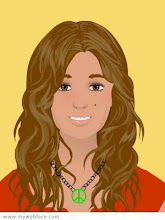
When it comes to the topic of multicultural education, most of society would say that it is complicated. At least that’s the answer I have received many times when I have asked someone what they thought about it. I, however, would highly disagree with this. I think where we go wrong in education is that WE discuss multicultural education like it is an option, a suggestion, or even a chore. This is ridiculous. In fact, it is almost insulting that our society even has to come up with such a label as multicultural education. Shouldn’t our education system be multicultural anyway?
I remember taking a Day Care Perspectives class in undergrad and having to use the Early Childhood Environment Rating Scale to design a developmental appropriate preschool classroom. One of the criteria was that the classroom had to be multicultural and there were lots of ways to do this. For instance: the dramatic play center had to have clothing that represented different cultures, the kitchen center had to have food represented of different countries, the library had to have books about different cultures with characters of different races, etc. This was the first time that I realized how much we as educators could affect societies beliefs about multiculturalism. At first I thought this was a really good way to implement multicultural education; however, I noticed that it also taught stereotypes. The students assume that everyone in Asia wears a Kimono because that’s the outfit in the dress up center. Or, they assume that everyone who is Hispanic only eats tacos because that’s the food in the dramatic play center that represents them. I think that these stereotypes can very easily be avoided if we as educators take multicultural education a step further. It doesn’t just mean having things in the classroom to represent different cultures, it means TEACHING students how to appreciate and learn from different cultures. It’s important to have parents come into the classroom and tell stories about their cultures, their traditions, their lives. Have students bring in their family’s favorite foods and games.
Multicultural education isn’t just a word with a definition; it is an attitude, a choice: a choice to get to know someone else on a personal level and appreciate where they come from. This is how we influence society, we start with our students.
I remember taking a Day Care Perspectives class in undergrad and having to use the Early Childhood Environment Rating Scale to design a developmental appropriate preschool classroom. One of the criteria was that the classroom had to be multicultural and there were lots of ways to do this. For instance: the dramatic play center had to have clothing that represented different cultures, the kitchen center had to have food represented of different countries, the library had to have books about different cultures with characters of different races, etc. This was the first time that I realized how much we as educators could affect societies beliefs about multiculturalism. At first I thought this was a really good way to implement multicultural education; however, I noticed that it also taught stereotypes. The students assume that everyone in Asia wears a Kimono because that’s the outfit in the dress up center. Or, they assume that everyone who is Hispanic only eats tacos because that’s the food in the dramatic play center that represents them. I think that these stereotypes can very easily be avoided if we as educators take multicultural education a step further. It doesn’t just mean having things in the classroom to represent different cultures, it means TEACHING students how to appreciate and learn from different cultures. It’s important to have parents come into the classroom and tell stories about their cultures, their traditions, their lives. Have students bring in their family’s favorite foods and games.
Multicultural education isn’t just a word with a definition; it is an attitude, a choice: a choice to get to know someone else on a personal level and appreciate where they come from. This is how we influence society, we start with our students.
Anna


Awesome graphic!
ReplyDeleteYou make an excellent point. Multicultural education is an attitude and a choice. I also appreciated your addressing the stereotypes that we see too often in the classroom--- kimonos, tacos, etc.
Well done!